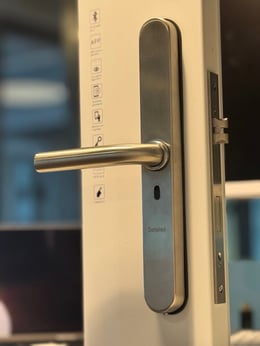The privacy button in EF Simpled smart locks serves an important function in enhancing security and user control. Here’s what the privacy button typically does:

Key Functions of the Privacy Button:
-
Disables External Access:
- When activated, the privacy button locks out all external access methods. This means that anyone trying to enter using a key, code, or mobile app will be unable to unlock the door. It effectively prevents unauthorized access during certain times, such as when you want to ensure complete privacy.
-
Maintains Access for Residents:
- The privacy mode allows residents who have physical access (like a key or pre-authorized fingerprint) to enter while blocking new access attempts from temporary codes or app controls. This ensures that while the lock is secured from outside, authorized residents can still come and go freely.
-
Ideal for Specific Situations:
- This feature is particularly useful in situations where you want to limit access temporarily, such as during gatherings, when guests are present, or when you simply want privacy in your home.
-
Easy to Activate/Deactivate:
- Typically, activating or deactivating the privacy mode is a straightforward process, often involving a simple press of the privacy button on the lock itself or through the TTLock app, allowing for quick adjustments as needed.
How to Use the Privacy Button:
- Activation: Press the privacy button on the smart lock. You may receive a visual or auditory confirmation (like a light indicator or beep) that the mode has been activated.
- Deactivation: Press the privacy button again or use the TTLock app to deactivate the mode when you want to restore normal access.
Summary
The privacy button is a valuable feature in EF Simpled smart locks, providing users with enhanced security and control over who can access their home at any given time. By disabling external access temporarily, it ensures peace of mind while maintaining convenience for residents.
